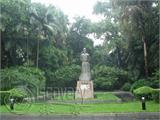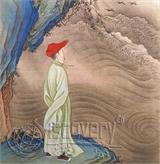Reviving Liushan and Establishing Schools (4) --- Guilin Historical and Cultural Figures
Guilin is a famous historical and cultural city with a brilliant history. The beauty of Guilin's landscape is known all over the world, giving Guilin’s tourism culture another globally recognized brand.
The caves along the Li River are the cradle of human civilization in Guilin. Archaeological findings show that as early as in ancient times, ancestors lived in more than 20 caves along the banks of the Li River in Guilin, including Baojiyan, Zengpiyan, Jiaziyan, and Danguiyan. At that time, Guilin was a valley surrounded by peaks with a warm and humid climate. The mountainous areas were covered with dense primeval forests where deciduous evergreen plants grew. Nearby were freshwater lakes and swamps, and nature bestowed abundant animal and plant resources. Wild animals roamed in groups, and subtropical wild fruits were everywhere. The early inhabitants ate wild fruits they gathered and hunted animals for food, drank clear river water, dressed themselves in leaves, tree barks or animal skins to protect against cold winds. They resided in cool limestone caves during winters and summers in Guilin, moved through vast primeval forests and thick bushes, using primitive stone tools as weapons to hunt wild animals and labor tools. They also processed food with pottery they had made, living and reproducing here.
They created the civilization history of humans in Guilin.
In 1979, archaeologists excavated two human tooth fossils, a batch of chipped stone tools, and fossils of mammals such as saber-toothed elephants, macaques, cattle, and sheep from a cave on Baoji Mountain in Guilin City. According to experts from the Chinese Academy of Sciences, Baojiyan on Baoji Mountain is a late Paleolithic cave site dating back about 30,000 years. Among the unearthed relics were two human molar fossils, which were milky white and belonged to the same elderly individual. These fossils belong to the late "Homo sapiens" stage and were named "Baojiyan Man". This is the earliest trace of ancient inhabitants discovered so far in Guilin. The discovery and excavation of Baojiyan filled the gap between Guangxi's "Liujiang Man" and "Zengpiyan Man".
Among Guilin's cave sites, the excavation of Zengpiyan is an important achievement in China's archaeological community. It is currently the cave site with the most ancient cultural relics discovered and the best-preserved one in China. Its age belongs to the early Neolithic period, approximately 7500 to 9000 years ago. It is an important cave cultural site in southern China, comparable to the "Shandingdong" site in the north.




